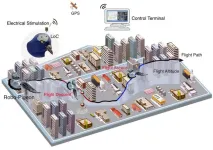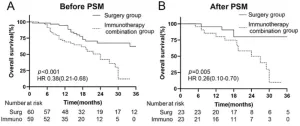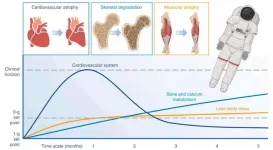Most cancer genome studies have focused on mutations in the tumor itself and how such gene variants allow a tumor to grow unchecked. A new study, led by researchers at Washington University School of Medicine in St. Louis, takes a deep dive into inherited cancer mutations measured in a healthy blood sample and reports how those mutations might take a toll on the body’s cells starting at birth, perhaps predisposing a person to develop cancers at various stages of life.
The authors analyzed the inherited genomes of more than 1,000 cancer patients and determined how inherited mutations — also known as germline variants — result in malfunctioning proteins, which in turn can impair physiological activities. The findings have implications for determining an individual’s inherited cancer risk and informing potential new strategies for prevention, early detection and treatment.
The study appears April 14 in the journal Cell.
“This is important foundational work for the field,” said senior author Li Ding, PhD, the David English Smith Distinguished Professor of Medicine at WashU Medicine. “We need to know how the germline variants — rare or common — potentially impact the protein machinery that makes our bodies work and what those impacts might mean for cancer development over the lifespan.”
The study represents a key milestone in the work of the Clinical Proteomic Tumor Analysis Consortium, a nationwide effort supported by the National Cancer Institute of the National Institutes of Health (NIH) that aims to define the roles of all cellular proteins involved in cancer development and progression. Everyone is born with germline variants — some consequential, some inconsequential, and many uncertain — and over the lifespan, different tissues pick up their own mutations. Tumors almost always have a set of new mutations that has been the focus of most clinical research. In this new study, the focus is on the inherited germline variants, rather than those acquired later.
Physicians can offer people with certain inherited mutations — such as those in two BRCA genes, which are known to increase breast cancer risk — options to reduce their risk of developing cancer. These interventions include more frequent breast cancer screening, preventive chemotherapy and surgeries. The new study builds on the utility of knowing cancer risks generated by germline mutations by analyzing the genomes of healthy cells from more than 1,000 cancer patients.
The team, co-led by first author Fernanda Martins Rodrigues, PhD, a postdoctoral researcher in Ding’s lab, analyzed the proteins associated with the inherited genomes of 1,064 individuals with 10 cancer types. The researchers identified 119 rare, cancer-causing genetic variants and additional common variants in cancer genes that may affect the structure, abundance and stability of key proteins involved with these cancer types. They also identified new, rare mutations strongly associated with cancer as well as common variants that, in concert, may tip the scales toward disease.
“What is new here is this study expands our knowledge beyond the inherited rare cancer-causing variants that we understand well, such as mutations in the BRCA genes,” said Ding, also a research member of Siteman Cancer Center, based at Barnes-Jewish Hospital and WashU Medicine. “This analysis now adds more common variants that may not cause cancer individually but appear to function as a group to influence important pathways involved in cancer.”
To determine the collective effect of all the variants they identified that could affect cancer risk, the researchers calculated what’s called a polygenic risk score for each patient. Such a score can estimate the combined cancer risk based on all the mutations taken together. If a person just has one or two cancer-predisposing inherited variants, that might not have a large effect. But inheriting multiple such variants could result in a higher risk.
The researchers found that patients with the deadly brain cancer glioblastoma, pancreatic cancer or an aggressive form of lung cancer had significantly higher polygenic risk scores than did healthy people or even people who developed other types of cancer. For patients with any cancer type, those with higher polygenic risk scores had more aggressive disease.
Based on their protein analysis, Ding and her colleagues found that multiple inherited risk variants, while seemingly independent, had downstream effects that converged on some biological process, such as certain aspects of immune function and protein stability.
One of the particularly insightful aspects of the study was the authors’ examination of how inherited mutations can affect structural alterations that proteins can undergo after they are assembled. Two of these important modifications involve small molecular tags being added to a protein in certain places. These tags can have tremendous impact on how a given protein functions, such as determining when and where the protein is active or not.
Genome sequencing alone — and not precisely matching germline mutations to the consequences they have on proteins, as Ding and her coauthors did — will miss these important modifications. This type of study adds new knowledge about the genetic factors that increase cancer risk, which could help improve the accuracy of polygenic risk scores in the future.
--
Rodrigues FM, Terekhanova NV, Imbach KJ, Clauser KR, Selvan ME, Mendizabal I, Geffen Y, Akiyama Y, Maynard M, Yaron TM, Li Y, Cao S, Storrs EP, Gonda OS, Gaite-Reguero A, Govindan A, Kawaler EA, Wyczalkowski MA, Klein RJ, Turhan B, Krug K, Mani DR, da Veiga Leprevost F, Nesvizhskii AI, Carr SA, Fenyo D, Gillette MA, Colaprico A, Iavarone A, Robles AI, Huang K, Kumar-Sinha C, Aguet F, Lazar AJ, Cantley LC, Marigorta UM, Gumus ZH, Bailey MH, Getz G, Porta-Pardo E, Ding L, Clinical Proteomic Tumor Analysis Consortium. Precision proteogenomics reveals pan-cancer impact of germline variants. Cell. April 14, 2025.
This work was supported by the National Cancer Institute (NCI) Clinical Proteomic Tumor Analysis Consortium (CPTAC) under award numbers U24CA210955, U24CA210985, U24CA210986, U24CA210954, U24CA210967, U24CA210972, U24CA210979, U24CA210993, U01CA214114, U01CA214116, U01CA214125, U24CA210972, U24CA210979 and U24CA270823; and contract GR0012005; the Spanish Ministry of Science, under grants RYC2019-026415-I, PID2019-107043RA-I00, RYC2019-026415-I, PID2019-107043RA-I00, RYC2020-030632-I, PID2019-108244RA-I00); the Fundación Cris Contra el Cáncer (PR TPD 2020-19). This research has been conducted using the UK Biobank Resource under Application Numbers 54343 and 74382. Data used in this publication were generated by the National Cancer Institute Clinical Proteomic Tumor Analysis Consortium (CPTAC), access through dbGaP accession numbers phs000892.v6.p1 (“CPTAC Proteogenomic Confirmatory Study”) and phs001287.v17.p6 (“CPTAC Proteogenomic Study”). This project has been funded in part with federal funds from the National Cancer Institute, National Institutes of Health, under Contract No. HHSN261201500003I, Task Order No. HHSN26100064.
The content is solely the responsibility of the authors and does not necessarily represent the official views of the NIH.
About Washington University School of Medicine
WashU Medicine is a global leader in academic medicine, including biomedical research, patient care and educational programs with 2,900 faculty. Its National Institutes of Health (NIH) research funding portfolio is the second largest among U.S. medical schools and has grown 56% in the last seven years. Together with institutional investment, WashU Medicine commits well over $1 billion annually to basic and clinical research innovation and training. Its faculty practice is consistently within the top five in the country, with more than 1,900 faculty physicians practicing at 130 locations and who are also the medical staffs of Barnes-Jewish and St. Louis Children’s hospitals of BJC HealthCare. WashU Medicine has a storied history in MD/PhD training, recently dedicated $100 million to scholarships and curriculum renewal for its medical students, and is home to top-notch training programs in every medical subspecialty as well as physical therapy, occupational therapy, and audiology and communications sciences.
END



